Have you ever had a workout schedule ruined because of that second-day soreness after trying something new? You’re not alone. Post-workout soreness and performance can be affected by not having the right recovery routine.
Athletes, fitness enthusiasts, and those of us striving to maintain a healthy lifestyle can sometimes overlook a critical component of training: post-workout recovery. Despite knowing that recovery is important, we may not fully understand why our bodies need it or what processes take place during recovery.
By learning what happens in the minutes and hours after really pushing ourselves, we can better understand our body’s unique needs and rhythms, and utilize better habits to customize our routines for the smoothest and most effective recovery.
Your body’s recovery process
Understanding how much rest you need between workouts starts with understanding what happens during a workout and why recovery is necessary in the first place. It isn’t just about taking a break; it’s about giving your body time to heal and make changes based on what it experienced during the workout.
Physiological stress
Ironically, working out is well-known for being something people do to relieve stress, although from a biological perspective, exercise induces stress throughout the body. When you work out, especially at high intensities, your muscles, joints, and cardiovascular system become highly active due to your sympathetic nervous system, which is also active when you’re feeling anxious about work.
The physiological stress placed on your muscles during a workout causes damage. Your muscle fibers develop tiny tears, which need healing. As you might guess, this phase is crucial for muscle growth and development, making post-workout recovery essential in the muscle-building process.
In addition, working out repeatedly without adequate recovery can pose risks, such as overtraining, fatigue, or even injury. It’s imperative to allow time for restoration not only for the best performance results, but also for reduced risk of injury.
Restoring balance (homeostasis)
The body’s goal post-exercise is a return to equilibrium or homeostasis. During recovery, your body mends muscle tissues, replenishes energy stores, and clears out metabolic waste. Hormones that spiked during the workout—like adrenaline—decrease, while the production of growth hormones may increase to facilitate muscle repair and growth.
At the same time, your parasympathetic nervous system activates, which lowers your heart rate, constricts blood vessels, and generally calms your body systems down from the high-demand energy needs of the workout to more gradual processes like digestion and energy storage.
These processes take time, which is why your downtime activities and habits after a hard workout are important.
Types of recovery
Depending on your goals from working out or exerting yourself, you’ll want to take note of two phases of recovery: short-term and training recovery.
Short-term recovery (the minutes between types of exercise)
People who do high-intensity interval training (HIIT) are well-aware of the rhythm used in short-term recovery, which can loosely be defined as the moments of rest between sets while still actively engaged in a workout. For runners, it’s the times you walk to catch your breath on a longer run.
During short-term recovery, your body experiences all the aspects of long-term recovery—lower heart rate, less blood flow, and reduction of inflammation. However, only the quickest parts of these processes can happen, as the sympathetic nervous system is still much more active than the parasympathetic.
The main thing to keep in mind during short-term recovery is to give yourself time to catch your breath so you don’t put too much strain on your muscles or heart.
Training recovery (the hours between activities)
Most people think of recovery as the space of days or hours between workouts, which reflects how critical this time is to your body’s healing and homeostasis process. The best habits for you during this time are going to be highly specific to your general health condition, genetics, goals, lifestyle, and access to specialized services or products. Because of this, we always recommend talking with a certified athletic trainer for the most personalized tips on maximizing recovery and finding a routine that enhances your performance sustainably.
Two of the most important factors of recovery are proper sleep and good nutrition. Just consider the muscular benefits to sleep and healthy eating: Muscle repair happens largely when you’re asleep, and without the building blocks of proteins, carbohydrates, and vitamins from a healthy diet, the body can’t quickly build new tissues. When you prioritize healthy habits in these two areas, your recovery period has a solid foundation.
Many athletes see benefits from doing cross-training or other active rest day activities between more involved or intense workouts, and there’s at least a little bit of evidence to support the idea that being active during the training recovery phase is beneficial as long as you don’t push yourself too hard.
How much rest do I need between workouts?
Finally, we can answer how long you need to rest between workouts for optimal recovery: it depends. Well-conditioned athletes can get used to high performance workouts nearly every day, with a little variety introduced as needed to keep their minds interested and their bodies engaged.
But for people who are rapidly building muscle because they’ve changed their routine recently, recovery could take days between exertions. If you’re feeling extra sore two days after a workout, chances are you may need to dial down the intensity of whatever you were doing. Our physical therapists can help you make sense of these or any other symptoms you might be experiencing as you change your activity level and workout plan.
Athletic recovery treatments
High-performance athletes and people rehabilitating injuries can often benefit from specialist attention and treatment for their condition or goals. At Sol, we have athletic trainers and facilities to support all kinds of performance training and recovery treatments, including:
- Massage
- Cryotherapy
- Kinesiology taping
- Hydrotherapy
Sports and performance training tips from the professionals
It’s hard to know exactly what practice, active recovery habits, or diet will help you push past the plateau you’re experiencing in your athletic or fitness pursuit without knowing exactly what you’re after. But if you’re looking for a few minutes of tailored, expert advice, our Sol athletic trainers are here to help. Start the conversation with us by calling an office location near you or by requesting a virtual appointment online today.


